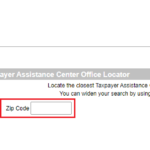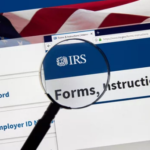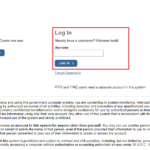Form 6251 is an Internal Revenue Service (IRS) tax form that helps determine the alternative minimum tax (AMT) amount that a taxpayer owes. It is the additional tax that one has to pay along with regular tax.
As per the instructions of Form 6251, taxpayers who have high incomes can claim various deductions in their regular obligated tax. This tax benefit significantly reduces the amount of regular tax that they have to pay.
To ensure that the individuals with high incomes must pay an appropriate amount of tax, AMT acts as an upper limit to allow the possible deductions. If you also fall under the Form 6251 criteria, you will have to ATM rather than regular income taxes.
You can use it to determine your tentative minimum tax. You may want to know the upper limit amount on the credits listed under the section Who Must File.
Why was Form 6251 enacted?
Contents
An ATM tax system is an additional tax system along with a regular tax system. It was enacted in 1969, and its primary purpose was to collect taxes from those highly wealthy individuals who were not paying taxes as per their resources.
This act limited the number of deductions that a taxpayer claimed to reduce his tax. For example, Form 6251 doesn’t allow deduction on state and local taxes. Moreover, it prevents wealthy individuals from taking standard deductions.
Calculation of alternative minimum taxable income (ATM)
Form 1040 has a tax return sheet that permits the taxpayer to estimate whether he owes the ATM or not. This form is different from Form 6251 because it doesn’t provide detailed information on tax computations. Moreover, it reduces the deduction benefits that taxpayer claims on Form 1040.
If you owe AMT, you have to calculate your ATM income. If you don’t itemize deductions, start with Adjusted Gross Income (AGI). If you itemize deductions, start with taxable income and add back your personal exemptions.
To finally get your alternative minimum taxable income, the form excludes the deductions that you initially claimed. After calculating your ATM, you can claim exemption as per your filing status. These exemptions are not your personal and dependent exemptions that you claim on the original tax return.
ATM exemption is higher than the standard exemption, but it diminishes with a certain income threshold. For 2021, ATM exemption on individual filers is $73,600 and $114,600 for married joint filers.
Filing Form 6251
After completing Form 6251, attach it with your personal tax return. Also, transfer your liable ATM amount on Form 1040 and attach it with Form 6251.
Always keep a record
Keep a record of your income and deductions to support the items that you reported on Form 6251. IRS may ask you to explain the items in your tax return. If you have good records, you will be able to explain everything and reach the correct ATM.
Limitations of Form 6251
Due to inappropriate inflation adjustments, ATM applies to a larger group of taxpayers that was not the original intention of this tax system. To this issue, Congress has passed annual inflation adjustments to limit the extent of the ATM implementation before fixing it permanently.
In 2019, ATMs gathered $4.7 billion, making only 0.3% of individual income tax revenue. This figure is significantly lower than the $36.2 billion that was collected in 2017. The real cause was the changes in ATMs as part of the Tax Cuts and Jobs Act (TCJA) of 2017. From 2018, TCJA was applied with higher ATM exemption and level at which exemption phases out.





